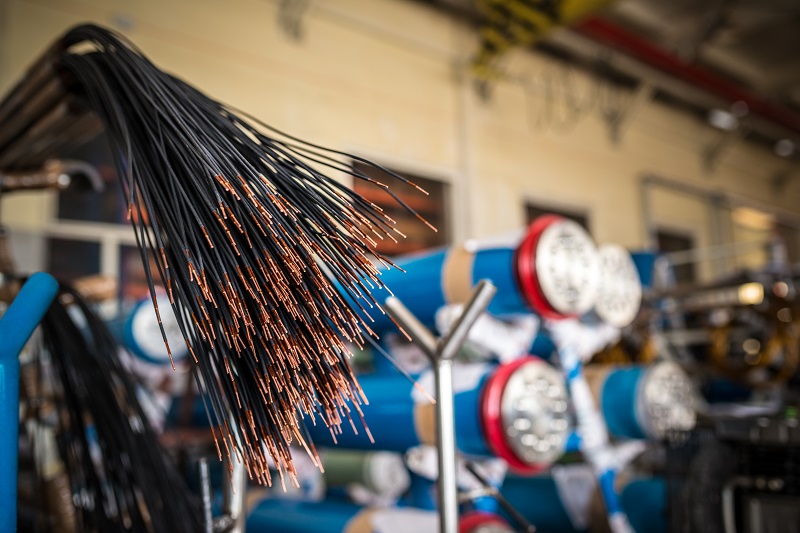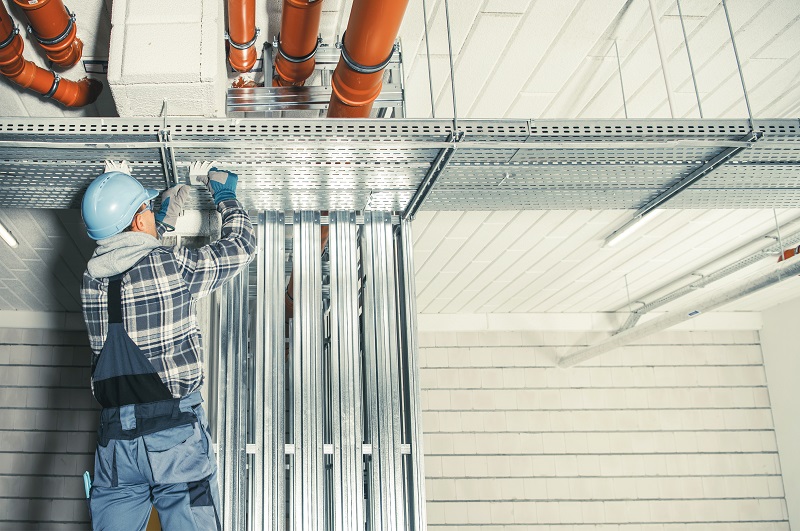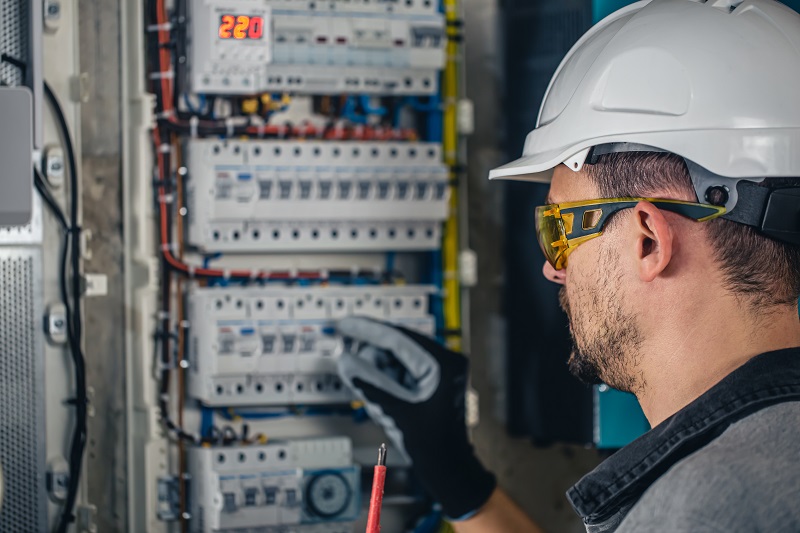Implementing electrical prefabrication is becoming more common everyday in the construction industry. According to a 2020 Dodge Data & Analytics report, prefabrication and modular construction use in commercial construction have increased 7% over the past five years.
Additionally, prefabrication is gaining popularity as a way to address labor shortages and improve efficiency in the construction industry. As a result, more and more electrical contractors are starting to adopt prefabrication processes to stay competitive and meet the demands of clients looking for faster and more efficient construction processes. The use of electrical prefabrication is growing in the construction industry and will continue to do so in the coming years.
A Refresh of What is Electrical Prefabrication
Prefabrication is assembling electrical components off-site in a controlled manufacturing environment before they are transported to the construction site for installation. The components are designed and manufactured to specifications, ensuring they fit precisely into the building’s electrical system.
This process offers several benefits, including reduced installation times, increased productivity, and improved quality control. Implementing electrical prefabrication can also minimize the risk of on-site accidents and reduce waste, resulting in cost savings for the construction project.
Prefabricated electrical components include switchboards, control panels, conduit assemblies, wire harnesses, and lighting fixtures. The components are typically manufactured in a factory or production facility using advanced technologies and assembly techniques.
Electrical prefabrication is becoming increasingly popular and offers numerous benefits to the construction industry, including increased efficiency, improved quality and consistency, and reduced costs. As such, it is becoming an increasingly important aspect of modern construction practices.
High Profile Prefabrication Projects
Tesla Gigafactory: The Tesla Gigafactory in Nevada is an example of a successful electrical prefabrication project. The factory produces electric vehicle batteries and other components using a highly automated and efficient prefabrication process. The use of prefabrication has allowed Tesla to reduce the cost of production and increase efficiency significantly.
The Golden 1 Center in Sacramento, California, is another successful electrical prefabrication project. The arena was built using a modular construction process that included prefabricated electrical components. This allowed for faster construction times and reduced costs while maintaining high-quality levels.
One Vanderbilt is a 67-story New York City skyscraper built using a prefabrication process for many of its electrical components. This allowed for faster installation times and reduced the risk of on-site accidents while ensuring high-quality levels.
University of North Carolina Medical Center: The University of North Carolina Medical Center in Chapel Hill used prefabrication to install a new electrical infrastructure in a 40-year-old building. The prefabrication process allowed for faster installation times and minimized disruptions to ongoing operations.
Seattle-Tacoma International Airport: The Seattle-Tacoma International Airport used prefabrication to install a new electrical system in one of its concourses. The prefabricated components were assembled off-site, minimizing disruption to airport operations, and reducing installation time.
5 Best Practices for Implementing Electrical Prefabrication
- Planning and Coordination: Proper planning and coordination are critical to successful electrical prefabrication. The project team must work together to ensure that all electrical components are identified and accounted for and that the prefabricated components are designed and built to meet the project’s specifications.
- Standardization: Standardization is essential to the success of prefabrication. Standardizing components and assemblies helps reduce errors and streamline the manufacturing process. Standardized electrical components are easier to assemble, saving time and reducing the likelihood of mistakes.
- Quality Control: Quality control is a critical aspect of electrical prefabrication, with processes established to ensure that all components are built to the project’s specifications and meet industry standards. This includes testing and inspecting each prefabricated component to ensure it meets the required quality standards.
- Safety: Safety should always be a top priority in electrical prefabrication. The prefabrication facility should have a safe working environment, and employees continually trained to use equipment and tools properly. Also, safety protocols should be established for the handling and storing of electrical components to prevent accidents and injuries.
- Continuous Improvement: Electrical prefabrication is an ongoing process. It is essential to continuously evaluate and improve the manufacturing process by analyzing performance metrics and areas for improvement and implementing changes to streamline the process and improve quality. Regular feedback from customers and employees can also help identify improvement areas and drive continuous improvement efforts.
Prefabrication offers several key benefits for contractors that include but are not limited to the following:
Key Benefits of Prefabrication for Electrical Contractors
- Time savings: Prefabricated electrical components can be assembled off-site in a controlled environment, significantly reducing installation times. This allows the project to be completed faster, reducing the overall construction schedule.
- Improved quality: Electrical prefabrication ensures that all components are manufactured precisely, resulting in higher quality control. The components are tested before they are shipped to the construction site, reducing the risk of errors and defects.
- Cost savings: Prefabrication can reduce the labor costs associated with on-site assembly and the time required to complete the project, resulting in significant cost savings for the construction project.
- Greater efficiency: Prefabricated electrical components are designed to fit seamlessly into the building’s electrical system, reducing the risk of errors and minimizing waste. This can lead to greater productivity and efficiency on the construction site.
- Safer construction jobsites: Since prefabrication is done off-site, there is less need for staff and on-site assembly, which can reduce the accident risks and injuries on the construction jobsite.











